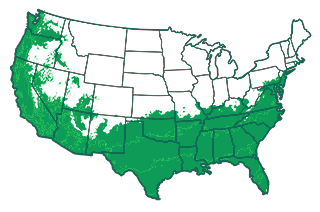About
Combining compact size, resilience, and exceptional taste, LSU Purple Fig trees are a rewarding choice for any garden.How tall does a LSU Purple Fig tree grow?
LSU Purple Fig trees can reach a mature height of 8-10 feet, making them an ideal size for small gardens and urban landscapes. Their compact stature allows for easy maintenance while still providing a generous yield of delicious figs. These trees are suitable for container growing, allowing more flexibility in both placement and climate adaptability.How long does a LSU Purple Fig tree live?
With proper care and favorable growing conditions, LSU Purple Fig trees can enjoy a lifespan of up to 50 years. Their longevity allows gardeners to benefit from year upon year of fruitful harvests while maintaining an aesthetically pleasing landscape feature. Consistent care contributes to the tree's health, ensuring many seasons of enjoyment.How fast do LSU Purple Fig trees grow?
LSU Purple Fig trees are known for their moderate growth rate, capable of adding up to 2 feet per year under optimal conditions. This steady growth allows the tree to establish a strong foundation while gradually expanding its canopy for fruit production. Regular maintenance, including appropriate watering and pruning, fosters robust growth and impressive fruit yields.How to care for LSU Purple Fig trees?
Caring for LSU Purple Fig trees involves understanding their specific needs for water, sun, and soil conditions. These trees thrive in full sun and require well-drained soil, with occasional deep watering once established. Regular pruning in the dormant season keeps the tree healthy, encourages prolific fruiting, and prevents diseases. Monitoring for pests and employing organic solutions preserves plant health and ensures bountiful harvests.When to prune LSU Purple Fig trees?
The best time to prune LSU Purple Fig trees is during their dormant season, typically in late winter before new growth begins. Pruning at this time helps shape the tree, removes any dead or diseased branches, and encourages the development of fruit-bearing wood. Seasonal pruning supports the tree's overall health and maximizes fruit production for the coming year.How to prune LSU Purple Fig trees?
Pruning LSU Purple Fig trees involves carefully thinning out crowded branches to improve air circulation and sunlight penetration. Start by removing any dead, damaged, or crossing branches, then focus on shaping the canopy to maintain an open center. This process encourages healthy growth and abundant fruit development, aiding in the tree's long-term vitality.Why do we like LSU Purple Fig?
The LSU Purple Fig is cherished for its delightful combination of sweet flavor and robust nutritional profile, making it a versatile addition to any garden or kitchen. Its compact size and moderate growth make it an accessible choice for enthusiasts seeking easy maintenance and abundant harvests year after year.| Mature Size | 8–10 ft tall × 8–10 ft wide |
| Sunlight | Full (6-8 hours) |
| Spacing | 10–12 ft |
| Harvest Season | July to September |
| Pollination | Self-pollinating |
| Uses | Fresh eating, preserves, baking |
| Water Requirements | Moderate; moist, well-drained soil |

Growing Zone: 7-10
Planting LSU Purple Fig trees begins with selecting a warm, sunny location where they can thrive with ample sunlight. Ensure the soil is well-drained to prevent root rot, positioning your tree with enough space for growth and air circulation. Dig a hole twice as wide as the root ball, setting the tree at the same depth it was previously growing and backfilling with soil while ensuring stability.
The optimal time to plant LSU Purple Fig trees is in early spring or late winter when the risk of frost has passed and the ground is workable. Planting during this period gives the tree ample time to establish a healthy root system before the hot summer months arrive. For regions with mild winters, autumn planting can also be suitable, allowing roots to develop in a cooler climate.
LSU Purple Fig trees should be planted with adequate spacing to ensure healthy growth and airflow between plants. A distance of 10-12 feet apart is recommended, as it allows the trees to reach their mature height and width without overcrowding. Proper spacing helps prevent competition for resources and reduces the risk of disease transmission between trees.


